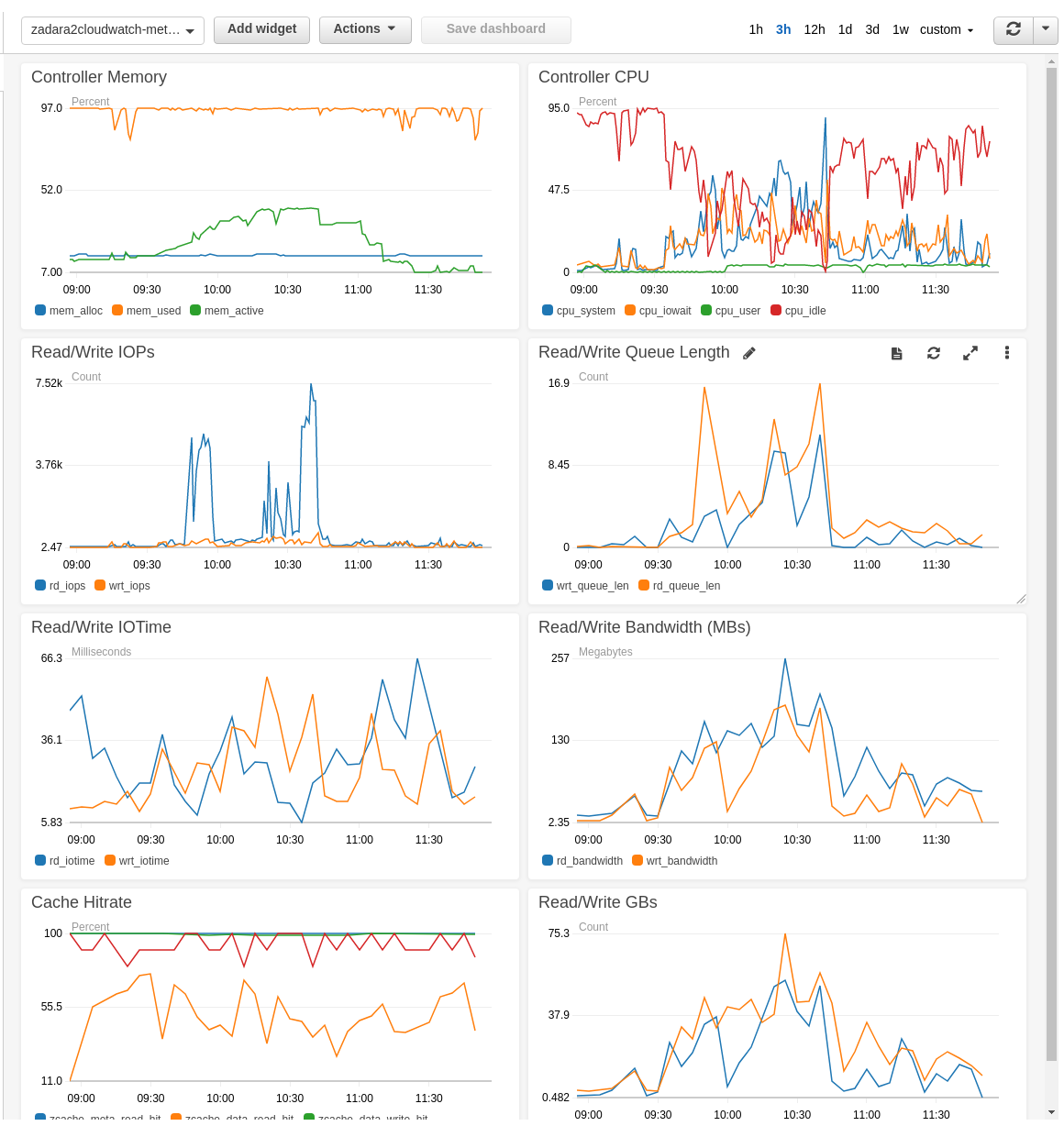zadara2cloudwatch
Push Zadara metrics and logs to cloudwatch. Metric data and logs are retrieved from Zadara via their REST API.
zadara2cloudwatch builds a CloudFormation stack with the following resources:
- AWS::Lambda::Function - fetches metrics and logs and pushes to cloudwatch
- AWS::IAM::Role - service role assumed by the function
- AWS::Event::Rule - scheduled function trigger
- AWS::Lambda::Permission - gives the event permission to trigger lambda
- AWS::Logs::LogGroup/LogStream - log group/stream for receiving log events
The Lambda function is triggered every 5 minutes. It fetches the most recent metrics for pools, volumes, servers (active) and controllers, as well as vpsa cache performance and stats. It also fetches the most recent VPSA log events, keeping track of the last event received via an SSM parameter.
This project was created by and for Harvard DCE, and might not be sufficient to satisfy all needs, but the function code is mostly straightforward and could be extended to include more data. Fork or pull request!
Setup
The project requires python 3 and was built/tested using v3.6.x.
After cloning the repo and activating a virtualenv, install the development
dependencies by first installing pip-tools and then running pip-sync:
pip install pip-tools
pip-sync requirements.txt
Deployment and configuation tasks are defined and executed using the invoke library. They are grouped into two command namespaces: "config" and "stack". To see the full list of commands, run:
invoke -l
Dependencies
Python dependencies are managed with the pip-tools tools. If/when packages are changed
or updated, run pip-compile on the respective .in file to regenerate the .txt list.
Then commit both the .in and .txt files to version control.
Configuration
Initial configuration can go two ways, depending on if you're starting from scratch with a one-off development effort or need to work on existing instances.
- For one-off development start by copying
config.ini.exampletoconfig.iniand filling in the top-level and stack-specific settings. - To work on an existing set of instances in which the shared configuration is stored in AWS
Parameter Store, run
invoke config.pull. The remote settings will be fetched and written toconfig.ini.
Top-level settings
AWS_PROFILE - this is only necessary if you have multiple aws profiles configured in ~/.aws/credentials
LAMBDA_CODE_BUCKET - name of an s3 bucket for storing the packaged lambda function code. The uploaded {{.zip}} file object will have a key like z2cw/${STACK_NAME}.zip.
Stack-level settings
[stack-name] - section headings in the ini file define the name of the CloudFormation stack that will be created. The names of many of the stack's resources are also based on this value, e.g. the lambda function will be named ${stack-name}-function
api_key - your Zadara API key value. Get this via the VPSA gui's "Users" section
vpsa_host - the host value of your Zadara VPSA, e.g. "vsa-0000099z-aws2.zadaravpsa.com:443"
metric_interval - Interval (in seconds) between metric datapoints pulled from the Zadara API
metric_namespace - CloudWatch metric namespace the metric data will be pushed to
vpc_subnet_id - ID of a VPC subnet that has access to the Zadara VPSA. This is necessary for the Lambda function to be able to communicate with the VPSA. (In the case of our DCE Opencast clusters, this should be the "private subnet".)
vpc_security_group_id - Security Group ID in the VPC. (For DCE this is the "Common" security group.)
Initialize the stack
Run the following commands:
invoke packageinvoke deploy
Wait for the CloudFormation console to show CREATE_COMPLETE for the stack.
Additional commands
Once the Zadara metrics begin to appear (should take ~5m for first trigger event), view the metrics and copy the name of the controller, volume and pool. Use those values to create the default Cloudwatch dashboard:
invoke create-dashboard [controller-id] [volume-id] [pool-id]
To publish an updated version of the lambda function code run:
invoke update-function
To delete the Cloudformation stack run:
invoke delete
